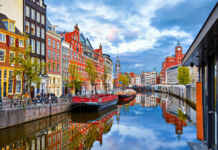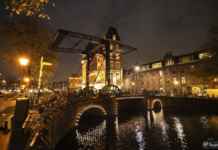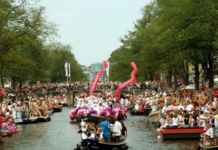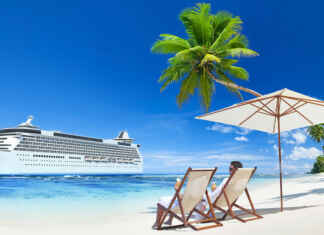Colloquially known as Venice of the North, the origins of Amsterdam can be traced to a small fishing village in the late twelfth century. In fact, since ancient times it was a well-known city and was probably the most planned city of northern Europe. In the 17th century Amsterdam, during the Dutch Golden Age, it was the centre of world economy. Today, Amsterdam is the nominal capital of the Netherlands and is the country’s largest city. With approximately over 3.5 million foreign visitors a year, it has become a thriving metropolis with world-class museums and lovely canals criss-crossing the city.
How To Reach?
In order to access Amsterdam, the first step for travelers is to take a flight to Amsterdam Airport Schiphol, which happens to be Europe’s fifth largest passenger airport. Situated approximately 20 km south-west of Amsterdam, this is the most convenient way to reach Amsterdam. There is also the option of flying to regional airports such as Rotterdam or Eindhoven, or airports near the Dutch border. From these, you can travel via public transport or taxi to Amsterdam. Traversing the Dutch borders on water is an activity which can be traced to ancient times. It continues to be an important mode of transport for many travelers. Such tourists can disembark on the PTA, a world class port which is walking distance along the waterside from Amsterdam’s Centraal Station. Within, Amsterdam boasts an impressive public transport network including metros, buses, trams, ferries and trains to help you get around the capital.
When To Visit?
Travel enthusiasts suggest that there is no worst time as such to visit Amsterdam. This is because the weather is never at extremes in this part of the world. Summer temperatures in Amsterdam don’t usually rise above 24°C, thereby resulting in a pleasant climate. The months of July and August attract the maximum visitors. due to the availability of a plethora of activities on offer. From in-line skating in Vondelpark to soaking up rays on cafe terraces to enjoying the fresh burst of colours down the countryside, visitors have a lot of variety to choose from. In winter, room rates are generally cheaper and one can get a better view of the canals. However, the days are short, which can prove to be a hindrance. So keeping all these factors in consideration, should one plan a trip to Amsterdam.
Currency
As in most European countries, the currency of the Netherlands is the Euro. Other currencies are normally not accepted, ensure that you convert all your money at any one of the currency exchange offices located throughout the city or at the airport.
What To See?
Amsterdam has a broad spectrum of tourist destinations to choose from. Some of the most interesting and important ones include:
• Museums: One of the main tourist attractions, Amsterdam has over fifty museums to offer to its visitors. From the Van Gogh Museum, which has the largest collection of Van Gogh’s paintings and drawings in the world to the Anne Frank House dedicated to the Jewish girl Anne Frank, each museum’s collections is worth having a look at.
• Churches and Synagogues: The Netherlands is reputed for its religious tolerance and thus, Amsterdam has numerous churches and synagogues, scattered around its landscape. Constructed in 1675, the Esnoga or the Portuguese Synagogue, is the most prominent synagogue in the region. Some other notable ones include Oude Kerk, Nieuwe Kerk and Zuiderkerk among numerous others.
• A trip to Amsterdam would be incomplete without taking a canal ride. The four main city center canals are Prinsengracht, Herengracht, Keizersgracht and Singel.
• Rembrandtplein Square: Lined with traditional Dutch pubs and cafes, this is the best area to catch a glimpse of the city’s night life.
For the sheer variety which the city boasts of, Amsterdam is one place which demands a visit once in a lifetime!












